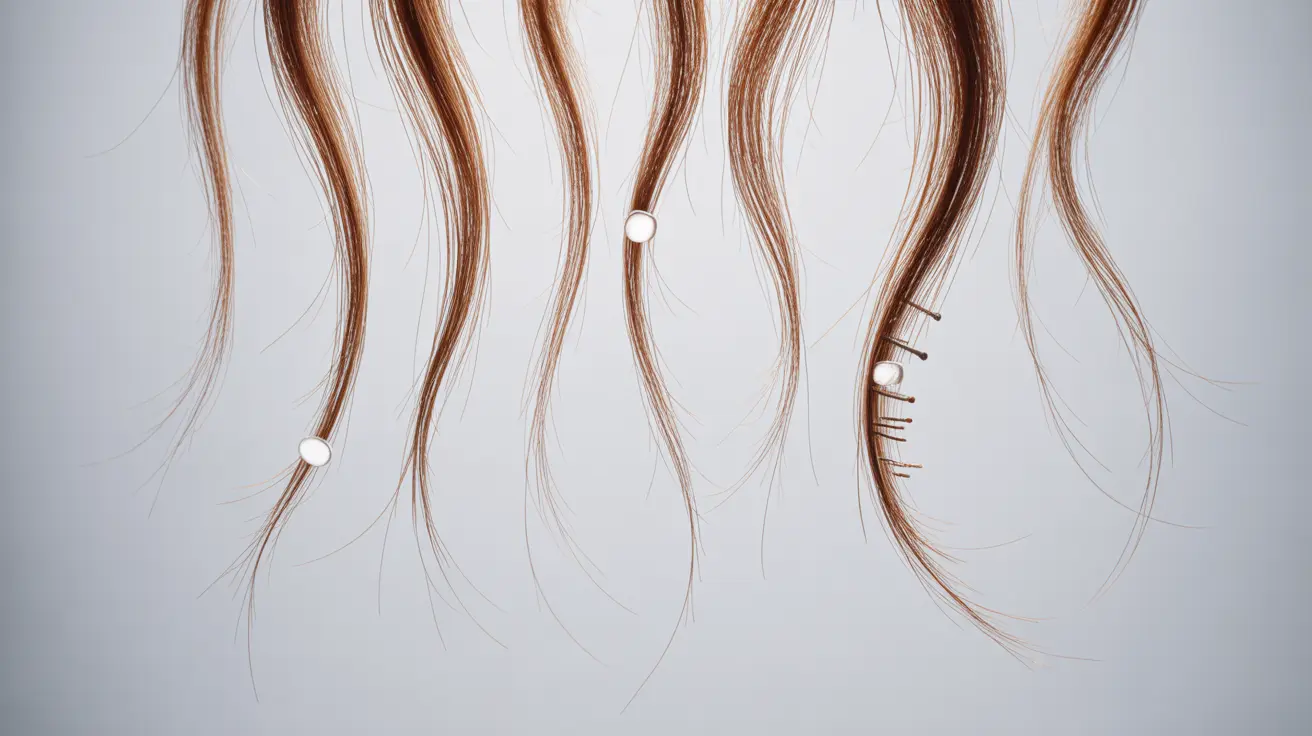Split ends are a common hair care concern that can leave your locks looking damaged and unkempt. These frustrating hair breakages occur when the protective outer layer of your hair shaft becomes damaged, causing the hair fiber to split into two or more fragments. Understanding how to identify, prevent, and manage split ends is crucial for maintaining healthy, beautiful hair.
While split ends can't be "healed" once they occur, there are numerous effective strategies to prevent their formation and minimize their appearance. This comprehensive guide will explore the causes of split ends, prevention methods, and practical solutions for healthier hair.
Understanding Split Ends and Their Causes
Split ends occur when the protective cuticle layer of your hair becomes damaged or worn away, exposing the inner cortex to environmental stressors. This damage can manifest in several ways:
- Single split ends (basic split)
- Multiple splits (tree-like appearance)
- White dots at the end of hair strands
- Frayed or feathered appearances
Common causes of split ends include:
- Excessive heat styling
- Chemical treatments and processing
- Rough handling of wet hair
- Environmental damage from sun and wind
- Poor hair care practices
Prevention Strategies for Healthy Hair
Proper Hair Care Techniques
Implementing the right hair care routine is essential for preventing split ends:
- Use a gentle, sulfate-free shampoo
- Apply conditioner primarily to mid-lengths and ends
- Pat hair dry with a microfiber towel instead of rubbing
- Detangle hair carefully using a wide-toothed comb
- Limit washing to 2-3 times per week
Protection from Heat and Environmental Damage
Protecting your hair from external damage is crucial:
- Always use heat protectant products before styling
- Keep heat styling tools at moderate temperatures
- Wear a hat or use UV-protective products in sunny conditions
- Sleep on a silk or satin pillowcase
- Avoid tight hairstyles that cause tension
Treatment and Management Options
While split ends can't be repaired once they form, several approaches can help manage their appearance and prevent further damage:
Regular Trimming
The most effective solution for split ends is regular trimming. Schedule haircuts every 8-12 weeks to remove damaged ends before they travel up the hair shaft.
Protective Products
Use specialized products designed to prevent and manage split ends:
- Leave-in conditioners
- Hair oils and serums
- Bond-building treatments
- Deep conditioning masks
- End-sealing products
Frequently Asked Questions
What are the main causes of split ends and how can I identify them in my hair?
Split ends are primarily caused by mechanical damage (brushing, styling), chemical processes, heat styling, and environmental factors. You can identify them by looking for frayed or split hair tips, white dots at the ends, or a general rough texture in your hair's ends.
How do I get rid of split ends and is it true they can't be repaired?
Split ends cannot be permanently repaired once they occur. The only definitive solution is trimming them off. However, temporary treatments like hair masks and serums can help improve their appearance and prevent further splitting.
What hair care routines or products help prevent split ends from forming?
Effective prevention includes using gentle hair care products, limiting heat styling, regular deep conditioning, using protective products, and handling hair gently when wet. Quality hair care tools and proper detangling techniques are also essential.
Can heat styling and chemical treatments increase the risk of split ends?
Yes, both heat styling and chemical treatments can significantly increase the risk of split ends. These processes can weaken the hair's structure and damage the protective cuticle layer, making the hair more susceptible to splitting.
How often should I trim my hair to prevent split ends from worsening?
Most hair care experts recommend trimming your hair every 8-12 weeks to prevent split ends from traveling up the hair shaft. Those with more damaged hair or frequent heat styling may need more frequent trims, while those with healthier hair might extend the time between cuts.




